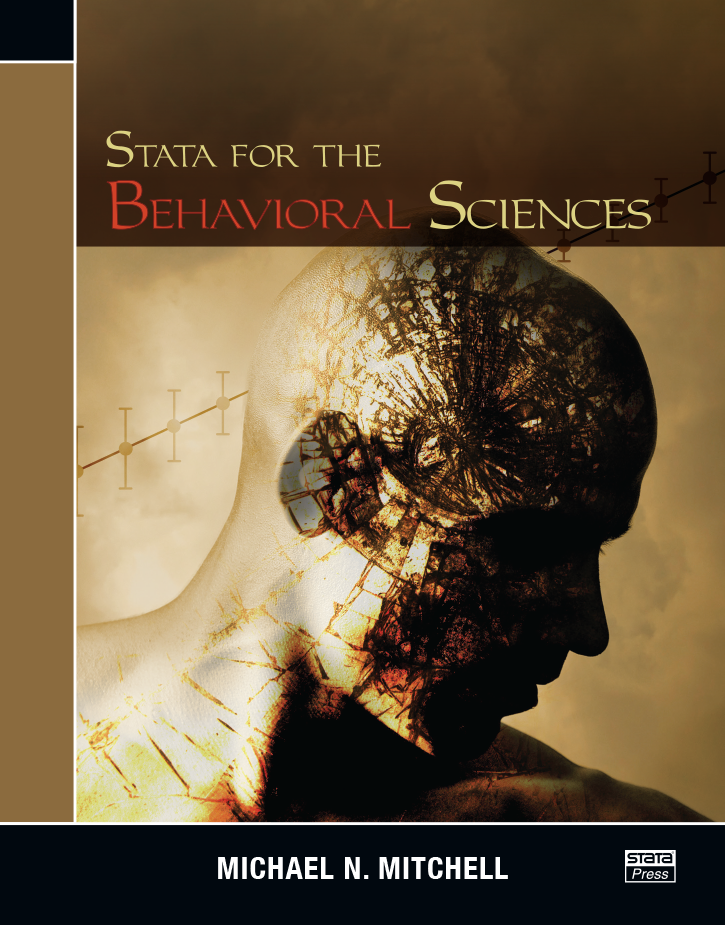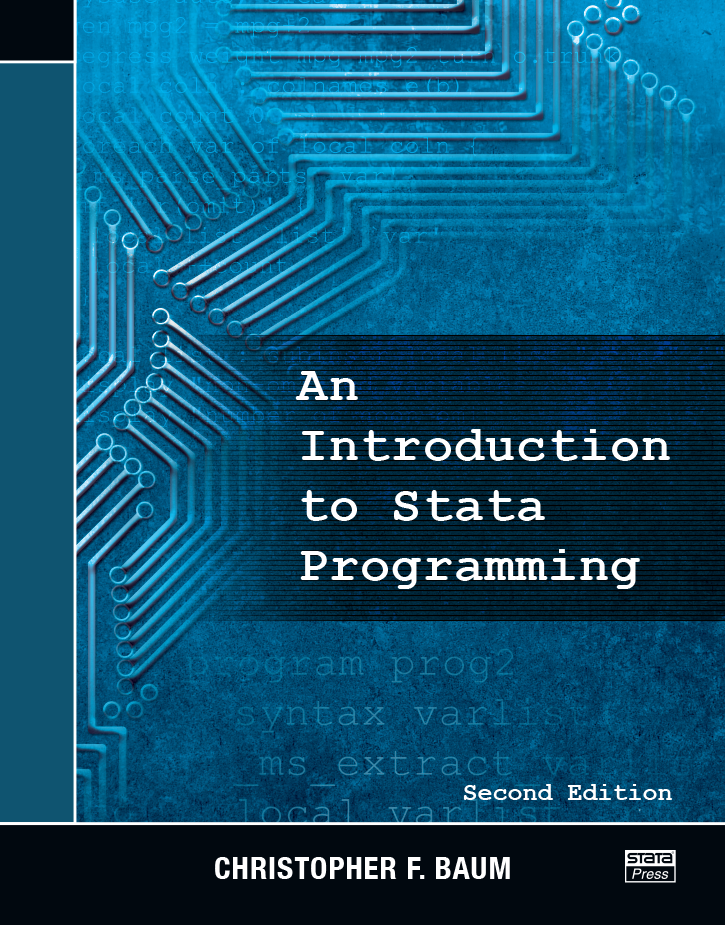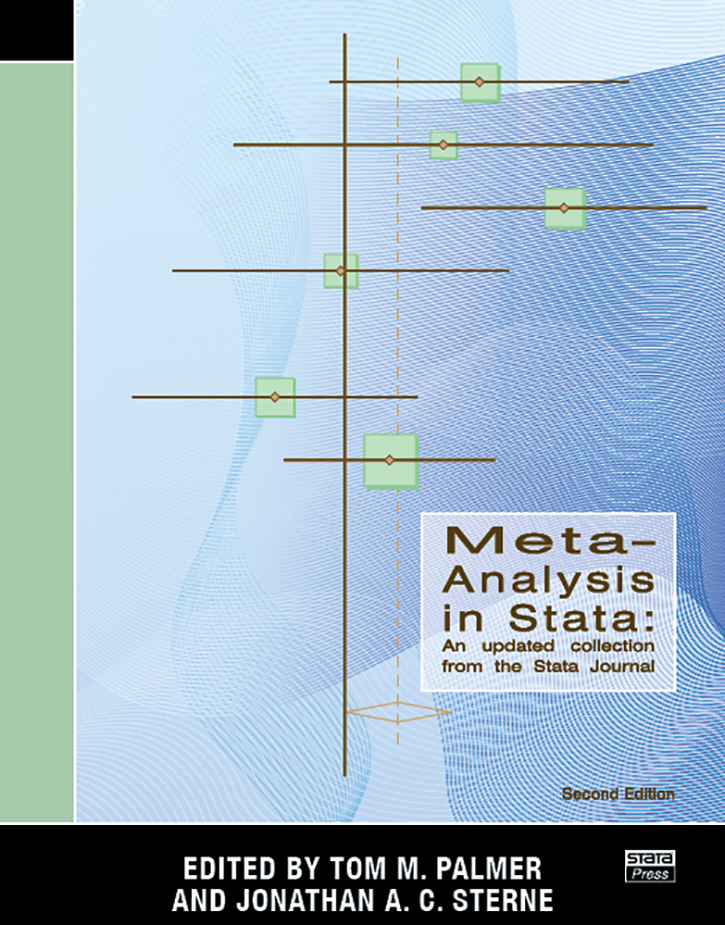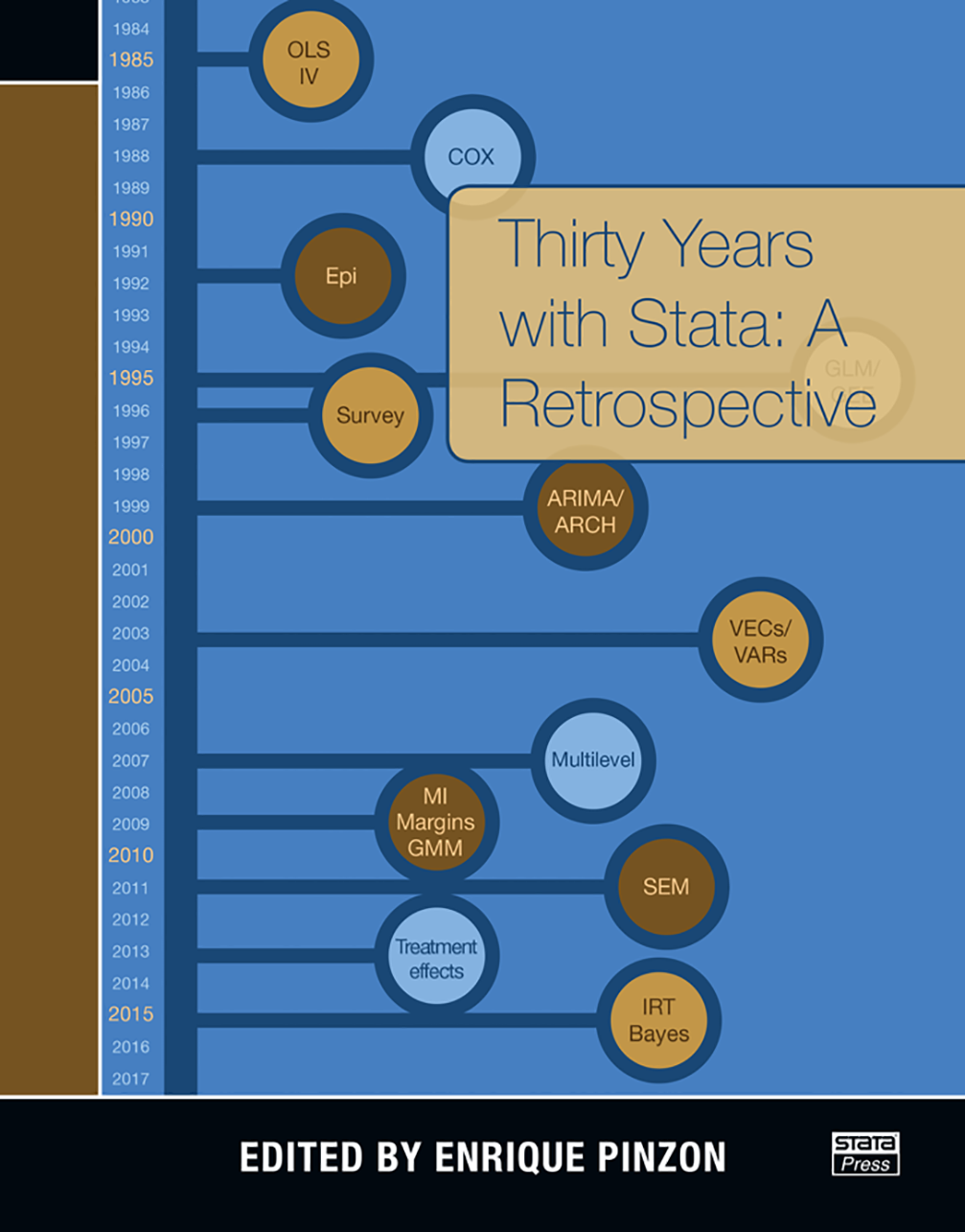What’s new from Stata Press
Reflecting on the year, Stata has a lot to be thankful for—we released Stata 14, celebrated 30 years of Stata, and had the pleasure of meeting and working with many great people, including our Stata Press authors.
Are you interested in writing a book about Stata or just a book on statistics? We’d love to work with you too. Stata Press offers books with clear, step-by-step examples that make learning and teaching easier. Read more about our submission guidelines, or contact us to get started.
If you’re searching for a good book to read during the holidays, check out our full list of books or our most recent ones below. If you’d like to be notified when new books are released, sign up for Stata Press email alerts.
I hope you all have a great New Year!
Stata for the Behavioral Sciences
Michael N. Mitchell’s Stata for the Behavioral Sciences is an ideal reference for researchers using Stata to fit ANOVA models and other models commonly applied to behavioral science data.
Drawing on his education in psychology and his experience in consulting, Mitchell uses terminology and examples familiar to the reader as he demonstrates how to fit a variety of models, how to interpret results, how to understand simple and interaction effects, and how to explore results graphically.
Highlights:
- Demonstrates fitting models to data from a variety of designs—one-factor, two-factor, three-factor, repeated measures, longitudinal, complex survey, and more
- Shows how to use Stata to easily understand the effects of categorical factors, continuous covariates, and interactions
- Introduces power analysis for ANOVA, ANCOVA, and regression models
- Provides Stata code and datasets so that the reader can reproduce all examples
- Gives an overview of Stata for new users and converts commonly used SPSS commands into Stata syntax
An Introduction to Stata Programming, Second Edition
Christopher F. Baum’s An Introduction to Stata Programming, Second Edition, is a great reference for anyone that wants to learn Stata programming. For those learning, Baum assumes familiarity with Stata and gradually introduces more advanced programming tools. For the more advanced Stata programmer, the book introduces Stata’s Mata programming language and optimization routines.
Baum introduces concepts by providing the background and importance for the topic, presents common uses and examples, and then concludes with larger, more applied examples he refers to as “cookbook recipes”. Many of the examples in the book are of particular interest because they arose from frequently asked questions from Stata users.
Highlights:
- Updated syntax and output
- Examples and discussions incorporating factor variables and operators
- Examples and discussions about computation of marginal effects, marginal means, and predictive margins using margins
- Examples using gmm to implement generalized method of moments estimation
- Examples using suest for seemingly unrelated estimation
- Mata-based likelihood function evaluators
- Commonly used Mata associative arrays
Meta-Analysis in Stata: An Updated Collection from the Stata Journal, Second Edition
Stata has some of the best statistical tools available for doing meta-analysis, and Meta-Analysis in Stata is a complete introduction and reference for performing meta-analyses in Stata.
In this new edition, editors Tom Palmer and Jonathan Sterne have substantially expanded the scope of the collection to cover many contemporary advances that will help keep the reader up to date. Topics range from standard and cumulative meta-analysis and forest plots to contour-enhanced funnel plots and nonparametric analysis of publication bias. In their articles, the authors present conceptual overviews of the techniques, thorough explanations, and detailed descriptions and syntax of new commands. They also provide examples using real-world data.
Highlights:
- Shows how to use Stata to conduct and interpret basic meta-analyses
- Illustrates the use of cutting-edge meta-analysis techniques such as multivariate or multiple outcomes meta-analysis, individual participant data (IPD) meta-analysis, and network meta-analysis
- Includes information about using Stata for other fundamentals such as meta-regression and graphical analysis of bias using funnel plots
- Explores a full range of user-written Stata meta-analysis commands
- Provides information about using official Stata commands such as sem and gsem to conduct certain types of meta-analysis
Thirty Years with Stata: A Retrospective
This volume is a sometimes serious and sometimes whimsical retrospective of Stata, its development, and its use over the last 30 years—complete with inside and outside points of view. Mostly, we simply wanted to celebrate the relationship between Stata users and Stata software. This volume holds something interesting for everyone.
Highlights:
- Shows how Stata has helped researchers in 13 different disciplines, from the perspective of leading scholars in their fields
- Illustrates the guiding principles that shaped Stata since its conception
- Explores how research and statistical analysis has evolved in the last 30 years and how Stata has been an integral part of this process



